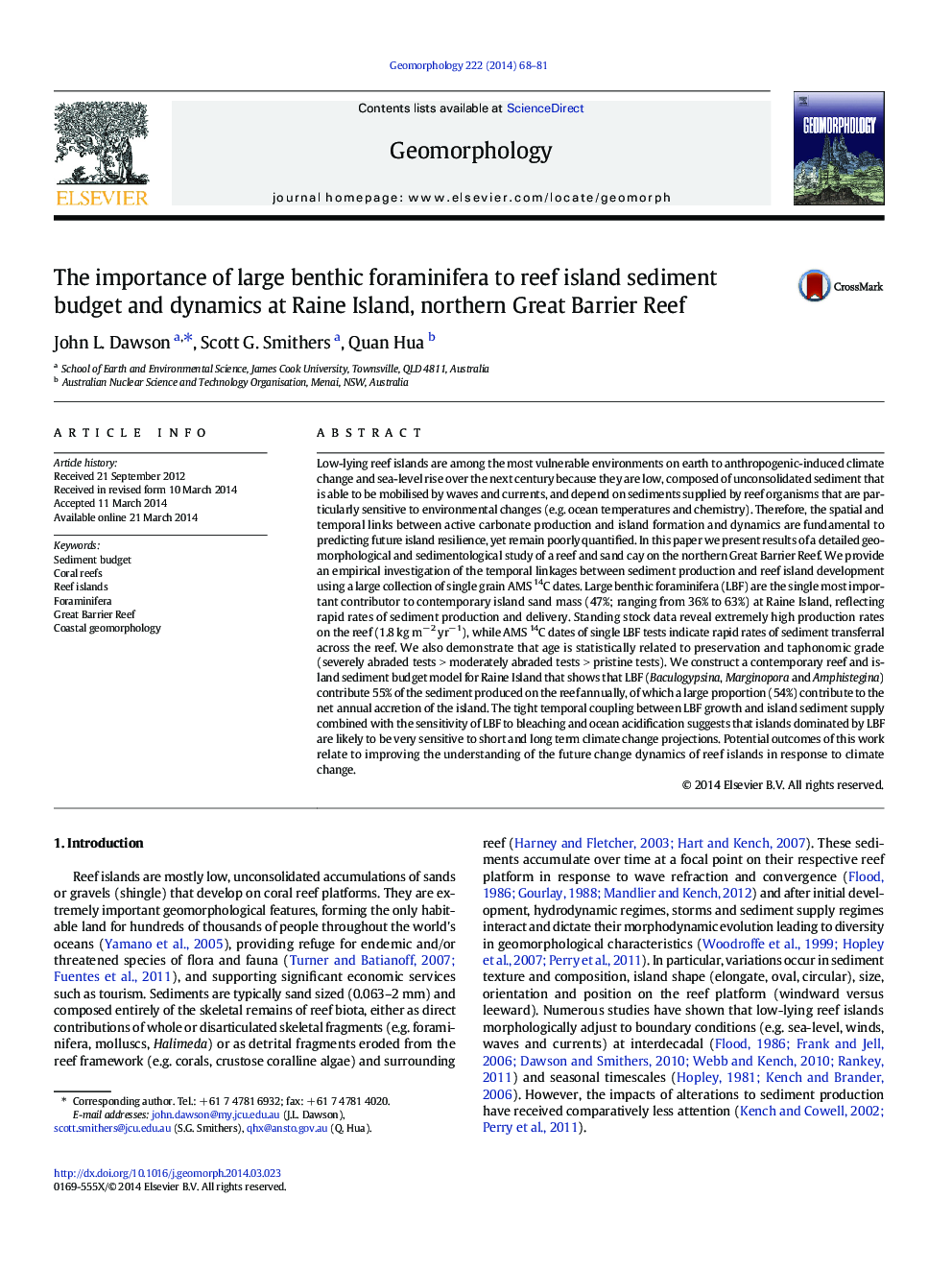| کد مقاله | کد نشریه | سال انتشار | مقاله انگلیسی | نسخه تمام متن |
|---|---|---|---|---|
| 6432414 | 1635427 | 2014 | 14 صفحه PDF | دانلود رایگان |
- We investigate temporal linkages between productivity and reef island development.
- We model the importance of foraminifera to reef island sediment budget and dynamics.
- 14C dating reveals rapid transferral of sediment supply between source and sink.
- Foraminifera contribute a significant portion of net island accretion.
- We improve the understanding of island dynamics in response to climate change impacts.
Low-lying reef islands are among the most vulnerable environments on earth to anthropogenic-induced climate change and sea-level rise over the next century because they are low, composed of unconsolidated sediment that is able to be mobilised by waves and currents, and depend on sediments supplied by reef organisms that are particularly sensitive to environmental changes (e.g. ocean temperatures and chemistry). Therefore, the spatial and temporal links between active carbonate production and island formation and dynamics are fundamental to predicting future island resilience, yet remain poorly quantified. In this paper we present results of a detailed geomorphological and sedimentological study of a reef and sand cay on the northern Great Barrier Reef. We provide an empirical investigation of the temporal linkages between sediment production and reef island development using a large collection of single grain AMS 14C dates. Large benthic foraminifera (LBF) are the single most important contributor to contemporary island sand mass (47%; ranging from 36% to 63%) at Raine Island, reflecting rapid rates of sediment production and delivery. Standing stock data reveal extremely high production rates on the reef (1.8 kg mâ 2 yrâ 1), while AMS 14C dates of single LBF tests indicate rapid rates of sediment transferral across the reef. We also demonstrate that age is statistically related to preservation and taphonomic grade (severely abraded tests > moderately abraded tests > pristine tests). We construct a contemporary reef and island sediment budget model for Raine Island that shows that LBF (Baculogypsina, Marginopora and Amphistegina) contribute 55% of the sediment produced on the reef annually, of which a large proportion (54%) contribute to the net annual accretion of the island. The tight temporal coupling between LBF growth and island sediment supply combined with the sensitivity of LBF to bleaching and ocean acidification suggests that islands dominated by LBF are likely to be very sensitive to short and long term climate change projections. Potential outcomes of this work relate to improving the understanding of the future change dynamics of reef islands in response to climate change.
Journal: Geomorphology - Volume 222, 1 October 2014, Pages 68-81
